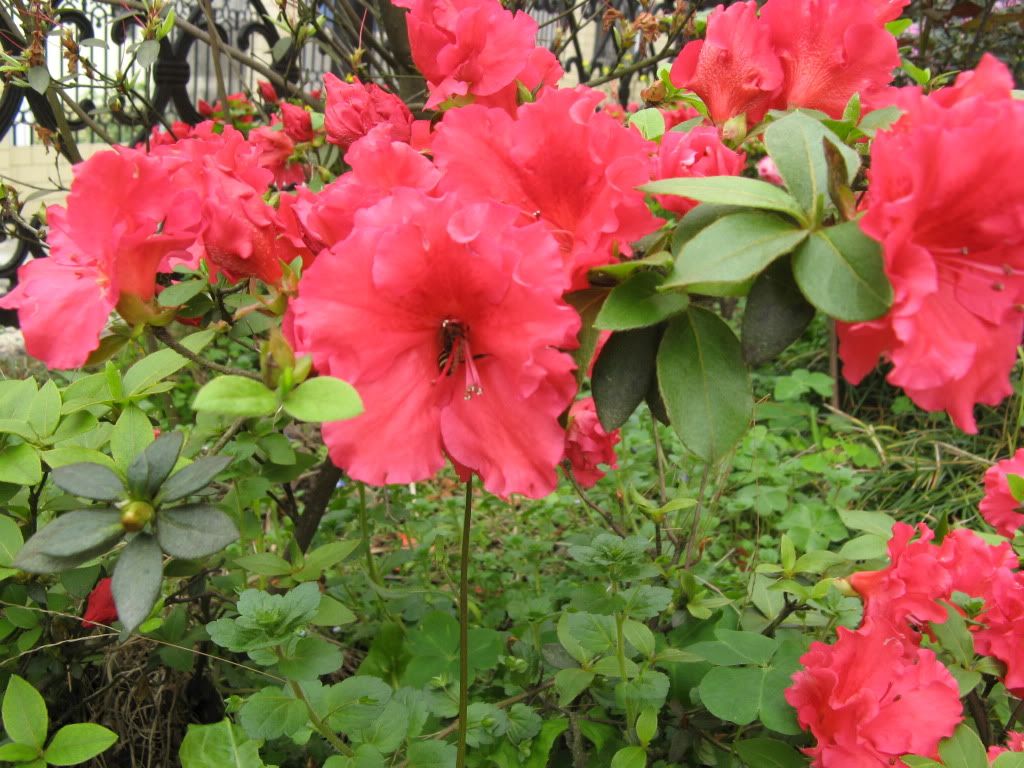There are several abiotic disorders that can create symptoms on camellias, azaleas, and rhododendrons.
Iron Chlorosis
Analysis- Iron chlorosis is a problem because these three plants are acid-loving plants. This is caused by a deficiency of iron in plant tissue. Even if your soil has iron in it the iron is not available to the plant because it is in an insoluble form. If your plant is close to concrete paths or walls and it is in a naturally alkaline areas, you will likely to have iron chlorosis.
Symptoms- The leaves are sometimes pale green to yellow. The new leaves can be completely yellow, with the tissue and veins remaining green.
Treatment- To treat your plants you will need to increase soil acidity by adding iron sulfate, sulfur, or ammonium sulfate. After you do this check the soil pH and if you need to add more chemicals, do it now. Another way to do this is by mulching soil with leaf mold or pine needles and them use a fertilizer that is formulated for acid-loving plants. If this does not help then you will need to spray the foliage with cheated iron.
Salt Burn
Symptoms- The leaf edges of these plants will turn brown and brittle. The lowest leaves on a plant which is the older leaves, the browning will occur.
Analysis- This happens when excess salts which are in the soil that are taken up by the plant and it all goes to the leaves. Salt burn is usually found in areas that are long-term or short-term low rainfall and when to much fertilizer has been used. This problem can just in acid or alkaline soil. If you have these plants planted in containers or in poorly drained soil, there is a chance that you will have this problem with your plants.
Windburn, Sunburn, And Winter Injury
Symptoms- The symptoms are that the young, exposed leaves will turn dry and brown, particularly around their leaf edges, and near tips. One part of your plant may look healthy, while the other part of the plant looks real sick.
Analysis- If you plant your plant in a cold climate, or in a windy or sunny location you will have this problem. Excess heat and sun can also cause this problem. Plants that are growing in windswept locations., will get windburn and winter injury. When the winter temperatures goes below 32 degree F and if you have strong winds this will cause the leaves to lose moisture a whole lot faster than the roots can replace and they causes these problems. Leaf burn will occurs on very windy, dry, summer days or excessive sun in hot temperatures.
Treatment- Plant shrubs in locations protected from sun or wind will help this situation. Shrubs need to be well-watered during the hot, windy, time. Always water in late fall and winter time to make sure that they are having enough water.
Summary
Camellias, rhododendrons, and azaleas have several physiological or abotic disorders. Probably if
you go by all of these treatments, this should help all of your problems.
 ">
">



